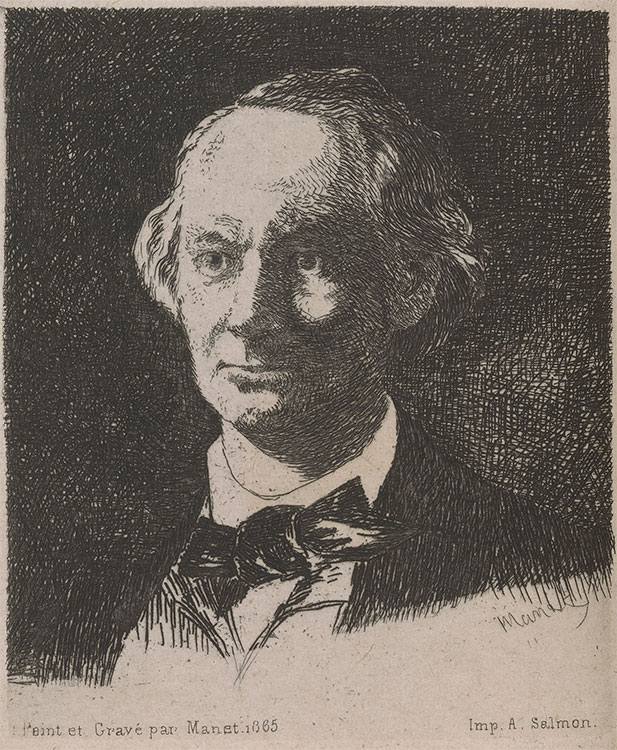In the sonnet “Correspondences,” Charles Baudelaire grounds his liberating poetics in synesthesia—the merging and matching of diverse sensory impulses. The world, to him, is a forest of symbols: sounds, perfumes, and colors all correspond with an individual’s interior reality. The possibilities for language and significance are singular, therefore infinite: “all sing the raptures of the mind and of the senses.” When censors recalled the first edition of Les Fleurs du mal on the grounds of obscenity, they took no notice of the poem. Some literary critics, however, would come to view it as the most dangerous work in the book, due to its profound influence on younger poets such as Rimbaud and Verlaine.
Édouard Manet (1832–1883). Portrait of Charles Baudelaire, etching, 1865, in Charles Baudelaire (1821–1867), Les fleurs du mal (Paris: Poulet-Malassis et de Broise, 1857). Gift of the trustees of the Dannie and Hettie Heineman Collection, 1977. Heineman 40.

